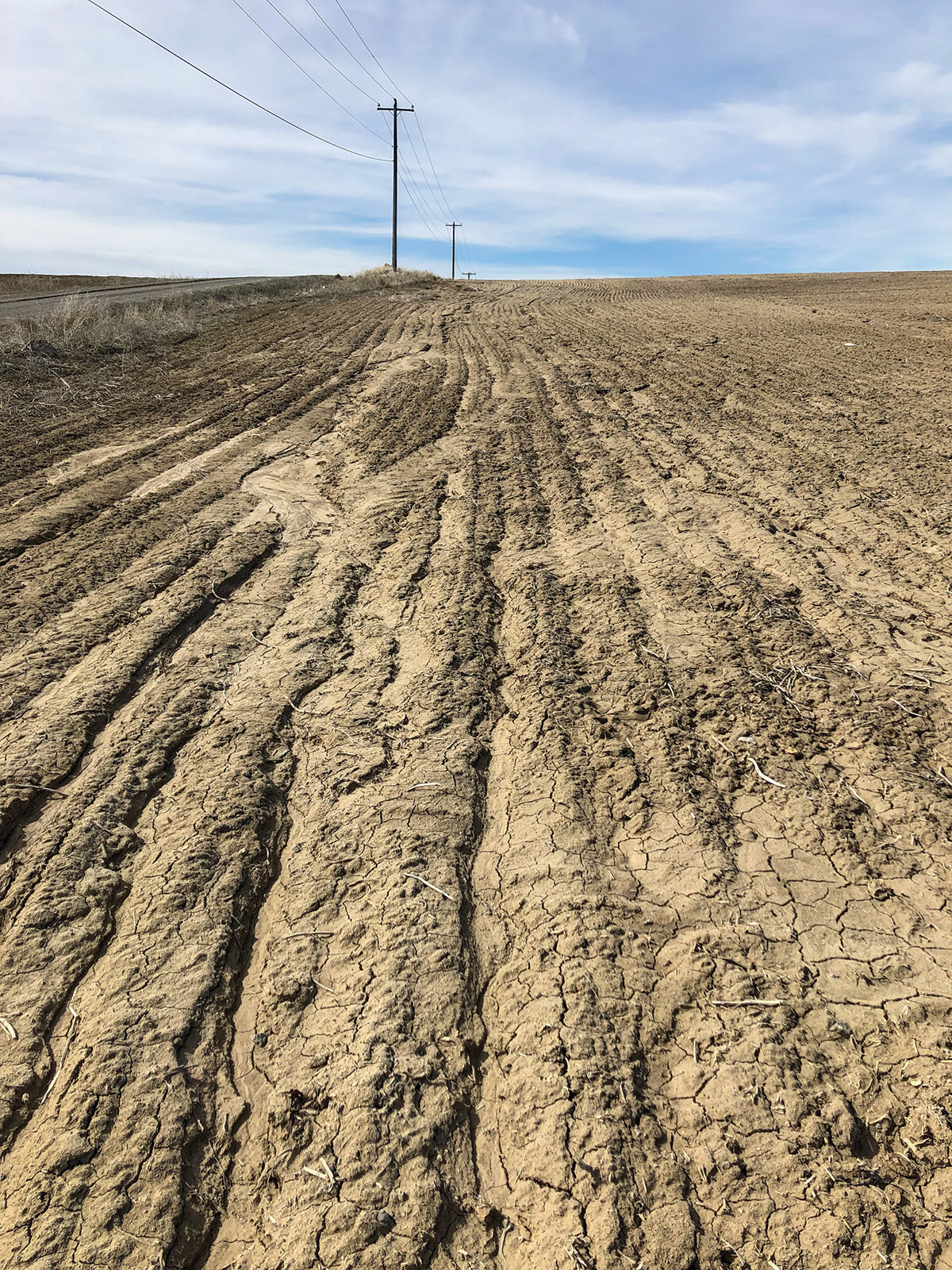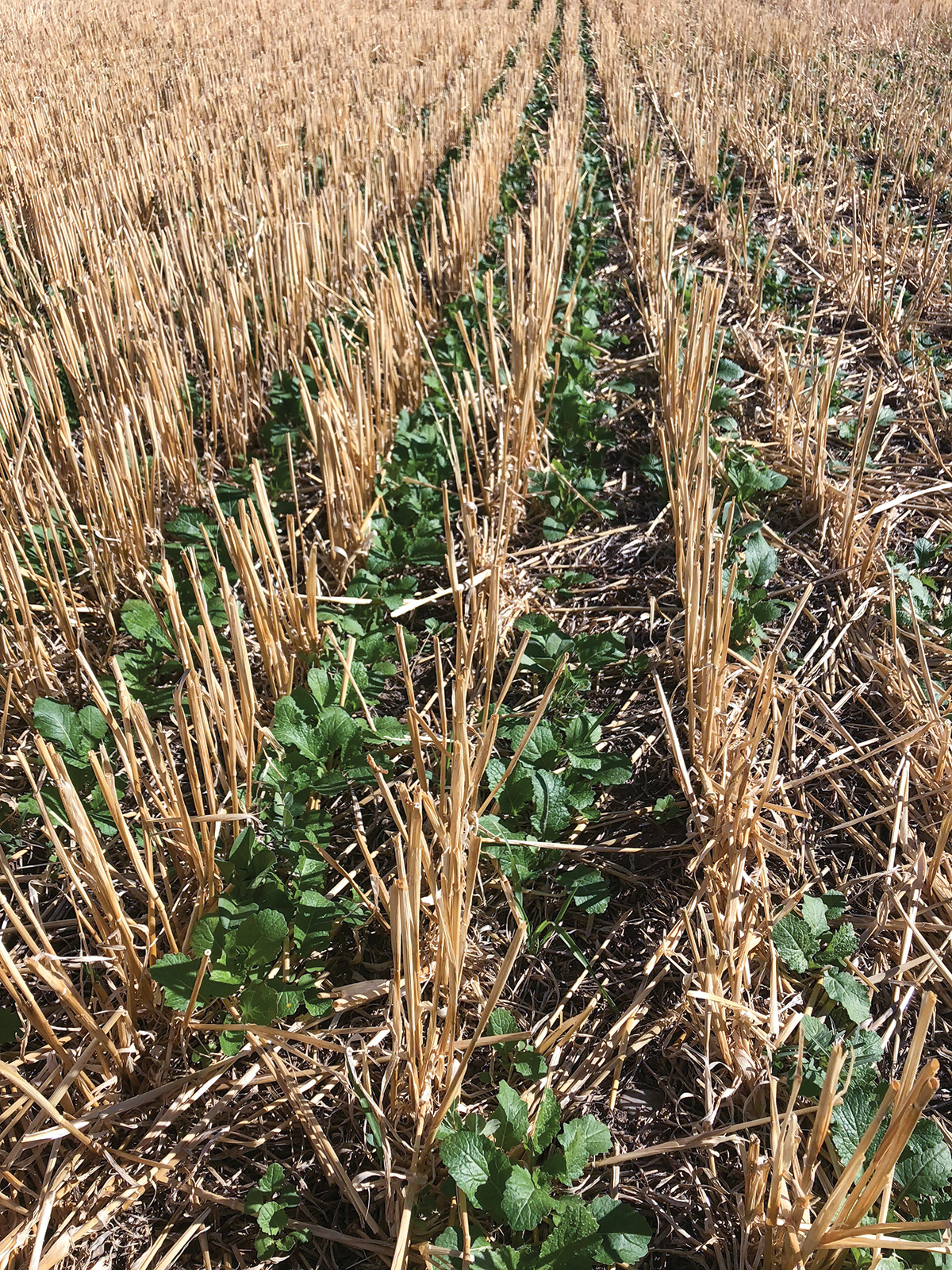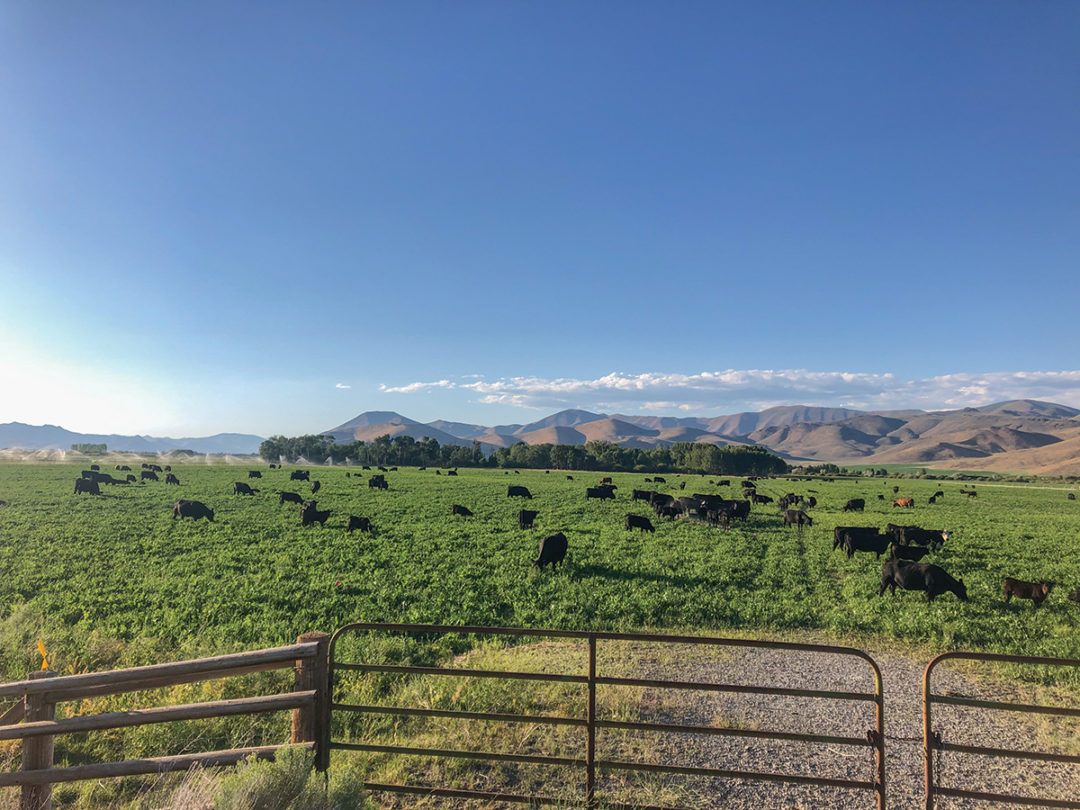Pat Purdy started using no-till methods in 2014 on his family farm near Picabo, Idaho, and has seen an impressive difference. “I came back to farm with my dad [Nick Purdy] in 2008. At that time, we were a traditional, conventional farming and cow-calf operation and had contracts with Anheuser Busch and Coors for malt barley and produced a lot of dairy hay,” Purdy says.
In 2013 at a Tri-State Grain Growers Conference in Spokane, he met some people representing the Pacific Northwest Direct Seed Association (PNDSA) and is now a board member of that association. “They had a booth at that show, and I talked to some of the farmers about what they were doing and how they were doing it. They were from northern Idaho and eastern Washington and [were] dry-land farming raising wheat, canola, garbanzo, etc. and doing it all with no-till. They had videos showing no-till examples, and I talked to them about the advantages and disadvantages,” Purdy says.
They talked about big reductions in erosion and significant reductions in fuel costs, equipment and labor. Purdy had a friend locally who was interested in experimenting with no-till who purchased a used no-till drill from the Midwest.
 Bare ground exposes soil to wind and water erosion. The goal of no-till is to leave something in the ground year-round to hold the soil and build its organic matter. Photo provided by Pat Purdy.
Bare ground exposes soil to wind and water erosion. The goal of no-till is to leave something in the ground year-round to hold the soil and build its organic matter. Photo provided by Pat Purdy.
“I convinced him that I was going to need it sooner than he was, so we shipped it to my farm first. In 2014, we split an 80-acre field and planted half of it conventionally and the other half with the no-till drill,” he says.
“We didn’t know what we were doing, but it went well. We could see some improvement on the no-till side. We bought our own no-till drill in 2015 and started learning how to run a no-till system. It was a small box drill and we’ve since replaced it with a larger air-seeder no-till drill. A few years later, we sold our conventional drills and most of our tillage equipment. Now we no-till 80 to 90 percent of our acres. We lease some ground to a potato farmer, which does require tillage, and have some organic acres we must do tillage on, but 100 percent of our conventional acres are no-till, unless they are in potatoes,” Purdy says.
“We transitioned slowly, doing a mix of conventional and no-till farming the first few years. We got our nose bloodied a few times; it was learn as you go. There was not much information available at that time regarding no-till practices. There’s 100-plus years of information about how to farm conventionally – lessons passed from grandfathers to fathers to sons and daughters. With no-till, however, I did not have my dad or my grandfather to turn to, though I did have a mentor – John McNabb – who lived near Inkom but has since passed away,” Purdy says.
McNabb was an early adopter of no-till farming. “He gave me a lot of good advice. If it weren’t for him, I probably would have given up,” says Purdy. “He kept encouraging me and telling me what I did wrong and what I needed to do differently. Our success would not have happened if it hadn’t been for him and others I was able to lean on and ask for advice and guidance.”
The good news is that today there is a lot of information available. “The term regenerative agriculture is common, and you’ll find all kinds of things about how and why and cover crops, soil health, different products and practices that help. It’s a much easier transition. The guys who did it back in the early years were truly pioneers and very brave to do what they did,” Purdy says.
Tim Cornie has been experimenting with no-till, cover crops and direct seeding on his organic farm near Buhl, Idaho, for 17 years and feels these methods have improved his soils.
He started farming in 1990 on the place where he grew up (between Hagerman and Castleford). Originally, the 500-acre farm was flood irrigated, then he installed gravity pressure pivots. He farmed conventionally and ran yearling cattle on irrigated pasture, doing intensive grazing under pivots, rotating pasture with crops. Then he started organic farming with corn, malt barley, organic alfalfa, dry beans and wheat.
 A no-till planting leaves plenty of stubble in the field from the previous crop to help protect the soil so the new crop can establish. Photo provided by Pat Purdy.
A no-till planting leaves plenty of stubble in the field from the previous crop to help protect the soil so the new crop can establish. Photo provided by Pat Purdy.
He and his cousin Kurt Mason operated more than 18,000 acres between them. Four years ago, they purchased an old 200,000-square-foot Pillsbury plant at Buhl and turned it into a processing and packaging mill to turn all their farm products into food for the community. Within this facility, a wide variety of products are now prepared for sales across the state, country and around the world.
“We package it in our 1,000 Springs Mill and currently grow beans, rice, ancient grains, specialty grains. We sell it via e-commerce to retail stores. Our company is farm-to-table,” he says.
“Our big thing is regenerative farming and no-till cover crops in the fall. I have a friend who has two bands of sheep he brings to my fields for intensive grazing all winter. We use this as a way to fertilize – the sheep are good for the soil,” Cornie says.
“I plant cover crops as a ‘salad bar’ for the sheep – kale, peas, tillage radish and volunteer grain – and grow it about knee-high before the sheep come. They graze through winter, eat any weeds and fertilize the soil. Then we plant other crops behind them,” he says.
Cornie tries to cover crop as much of the farm as possible, to always keep something growing. “We generally plant wheat behind the beans, and the sheep graze some of the wheat along with the cover crop. We also do buckwheat behind our grains because it helps with phosphate content of the soil. We harvest the buckwheat as a second crop, then put the sheep on it as well,” he says.
This is great for the sheep and for the land, Cornie says; the soil has improved and the worm population in the soil has exploded with the added organic matter. Some species in the cover crop mix (peas and tillage radish) fix more nitrogen in the soil for the next crop. The grazing animals add manure and organic matter from trampled plants and add litter. Commercial fertilizer is not as good, is expensive and can’t be used for organic crops.
Cornie bought a no-till drill from a friend in Idaho County 15 years ago, and now the soil uses less water and has more earthworm activity, he says. No-till planting doesn’t expose the soil biology to damaging effects of sunlight and air (and drying) like plowing does. “We plant directly into the residue on top and hold moisture longer,” he says. “Working with cover crops is good for the soil, and no-till planting leaves the carbon in place.”







